Savory Spices for Optimal Health and Gluten-Free, Vegan and Allergy-Friendly Recipes to Savor Them!
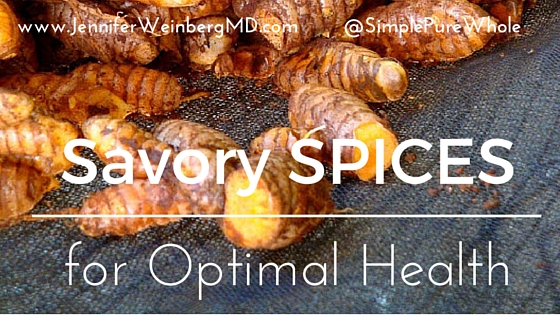
AFFILIATE DISCLOSURE: This post is NOT sponsored but contains affiliate links for products that I use myself. These products and the information provided should not be considered medical advice. Amazon and other merchants offer a small commission on products sold through their affiliate links. Prices are exactly the same for you if your purchase through an affiliate link or a non-affiliate link. Thank you!
Since early history, humans have utilized herbs and spices to preserve and flavor their food as well as for their medicinal properties. We are biochemically drawn to certain flavors which tantalize our taste buds and balance our bodies. Modern science has confirmed that herbs and spices don’t just boost flavor, they also support optimal health.
Spices are high in antioxidants and have anti-inflammatory properties. By weight, these substances are some of the most nutrient-dense superfoods around. Sprinkling some cinnamon atop your smoothie, incorporating turmeric in your soup or stirring some ginger into your tea can help reduce inflammation and boost your health!
Note: This post contains affiliate links for products that I use myself and frequently recommend. These products and the information provided should not be considered medical advice. Amazon offers a small commission on products sold through their affiliate links. Prices are exactly the same for you if your purchase through an affiliate link or a non-affiliate link. Thank you!
Cinnamon
Cinnamon is a popular spice which is commonly incorporated into baked goods as well as used in many cuisines. It contains a phytochemicals that support balanced glucose metabolism and help us use sugars for energy instead of storing them as fat. In fact, cinnamon has been shown to lower fasting blood sugars by 10-29% by slowing the breakdown of carbohydrates in the digestive tract and improving insulin sensitivity. It has also been shown to help decrease blood pressure and reduce triglyceride levels to protect heart health.
Simple Pure Whole Solutions
- The most commonly available “cinnamon” is of two types: Ceylon or true cinnamon and Cassia (Chinese) cinnamon. I always choose true Ceylon cinnamon due to its superior flavor and health benefits. Cassia cinnamon contains much higher levels of coumarin, an anti-coagulant substance that can thin the blood when consumed in higher doses, although some studies suggest that Cassia may have greater glycemic benefits.
- Enjoy cinnamon in sweet recipes like my Gluten-Free Coconut Ginger Granola Bars or Blueberry Pecan Coconut Granola as well as in savory seasonal dishes like my Autumn Harvest Skillet.
- Cinnamon can also benefit the skin and help reduce the inflammation of acne. Try adding 3 Tablespoons of local raw honey with 1 teaspoon of cinnamon and smooth on the face to reduce bacteria, redness and inflammation. Leave on for a few minutes and rinse.
Ginger
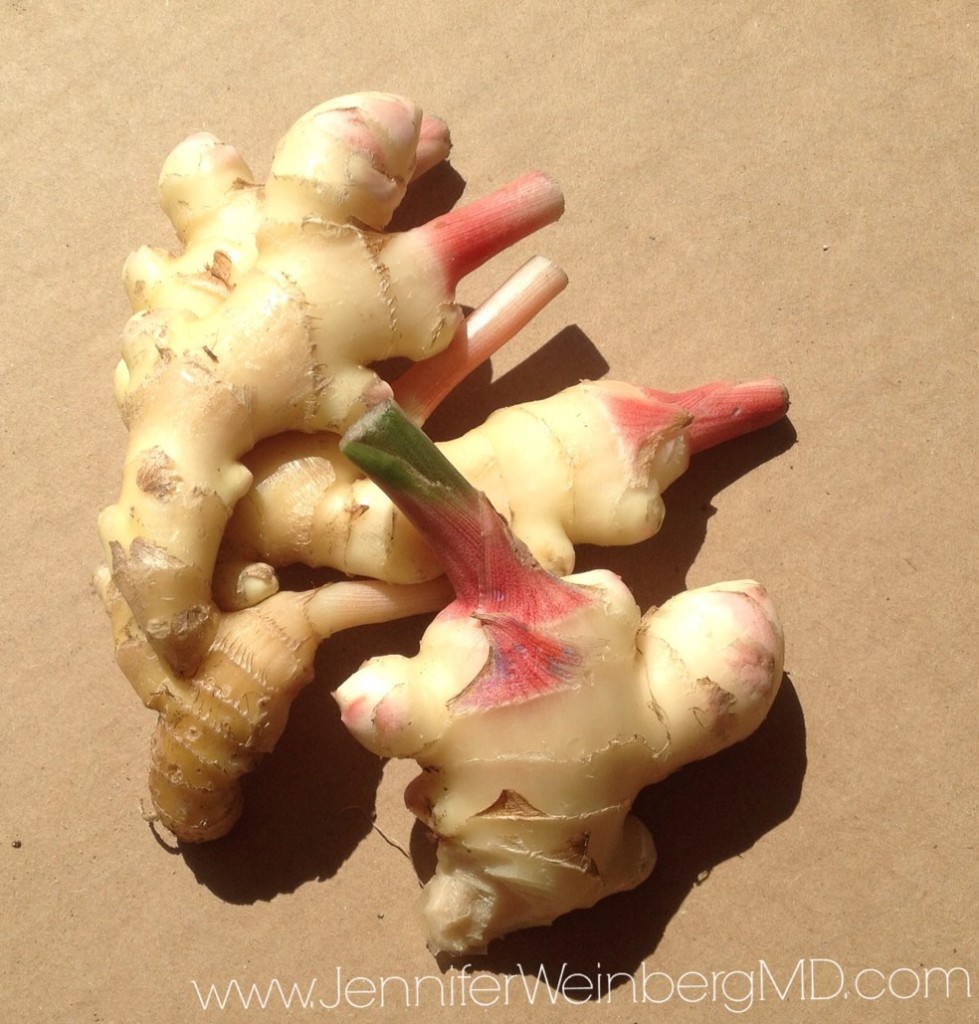 Ginger is best known for its ability to help qualm nausea, including that from morning sickness, chemotherapy and sea sickness. It is also a strong anti-inflammatory spice which helps prevent blood clots and slows the development of atherosclerosis. Gingerols are potent inflammation-reducing substances that support cell health and may help prevent chronic diseases like arthritis, cardiovascular disease, diabetes mellitus and even cancer. Ginger has long been used in traditional Chinese medicine to treat colds, nausea, indigestion and digestive imbalance.
Ginger is best known for its ability to help qualm nausea, including that from morning sickness, chemotherapy and sea sickness. It is also a strong anti-inflammatory spice which helps prevent blood clots and slows the development of atherosclerosis. Gingerols are potent inflammation-reducing substances that support cell health and may help prevent chronic diseases like arthritis, cardiovascular disease, diabetes mellitus and even cancer. Ginger has long been used in traditional Chinese medicine to treat colds, nausea, indigestion and digestive imbalance.
Simple Pure Whole Solutions
- Warming spices like cinnamon and ginger that I feature in many of my recipes (i.e. Autumn Harvest Skillet,Gluten-Free Coconut Ginger Granola Bars) support and strengthen the respiratory and digestive tracts. Baking with these spices, along with nutmeg and cloves, and incorporating them in smoothies, soups and teas are nice ways to enjoy their warming flavors while reaping health benefits.
- Make fresh ginger tea by grating raw organic ginger and seeping it in hot water.
- Sprinkle ground ginger over root vegetables before roasting.
Cardamom
Cardamom is both a culinary and therapeutic spice with special benefits for addressing a variety of health issues. This spice is commonly used in Indian cuisine and Ayurvedic medicine with its peppery, citrusy flavor and warming quality.
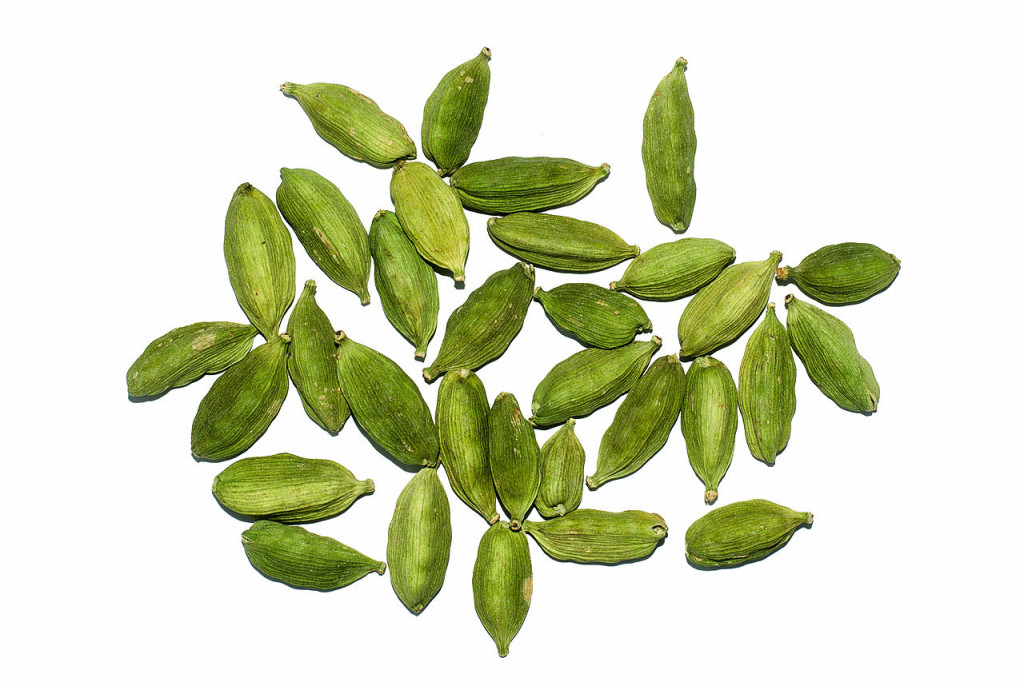 Cardamom contains manganese, potassium, iron, calcium, magnesium, niacin and vitamin C along with a variety of antioxidants. It is used in a similar way to ginger to heal the digestive tract and combat gas, bloating, nausea and heartburn. It also supports healthy detoxification, with diuretic properties to clean out the urinary tract and antioxidants to reduce inflammation. This spice is traditionally used in Ayurvedic medicine and increases the phase I enzymes in the liver that metabolize caffeine and other substances. Cardamom is also a powerful bronchodilator and helps clear mucus.
Cardamom contains manganese, potassium, iron, calcium, magnesium, niacin and vitamin C along with a variety of antioxidants. It is used in a similar way to ginger to heal the digestive tract and combat gas, bloating, nausea and heartburn. It also supports healthy detoxification, with diuretic properties to clean out the urinary tract and antioxidants to reduce inflammation. This spice is traditionally used in Ayurvedic medicine and increases the phase I enzymes in the liver that metabolize caffeine and other substances. Cardamom is also a powerful bronchodilator and helps clear mucus.
Simple Pure Whole Solutions
- You can use both whole or ground cardamom. Cardamom pods will stay potent longer than already ground seeds. You can quickly grind the inner seeds with a spice grinder or mortar and pestle for fresh, flavorful spice. Alternatively, heat whole pods in oil to release the essential oil and simmer them with quinoa or rice for a lovely pilaf.
- I love the unique flavor that cardamom brings to both sweet and savory dishes and highlight it’s special spiciness in my Gluten-Free Ginger Coconut Cashew Granola Bars and Oatmeal Cookie Gluten-Free Vegan Apple Crisp.
- Look for green (sometimes referred to as small) cardamom which has a more complex flavor to compliment both sweet and savory dishes.
- Adding 3 cardamom seeds to coffee or caffeinated tea can help your liver more easily process the caffeine in these beverages.
- Add a chai spice flavor to your coffee or tea by adding whole cardamom to your coffee beans before brewing or stirring ground cardamom into your beverage. Or warm up with my Balancing & Detoxifying Hot Spiced Tumeric Milk
- Add a citrusy-peppery punch to sauteed greens by sprinkling them with a pinch of cardamom.
Turmeric
Turmeric is a vibrant spice that lends a beautiful color to dishes like curries. It contains several compounds that are getting more and more attention recently from the scientific community. This rhizome contains curcumin, a powerful antioxidant compound that has been shown to slow memory loss from dementia and support liver health for healthy detoxification. Studies show that curcumin may match some anti-inflammatory drugs in potency making it potentially useful for conditions ranging from arthritis, to inflammatory bowel disease to cancer.
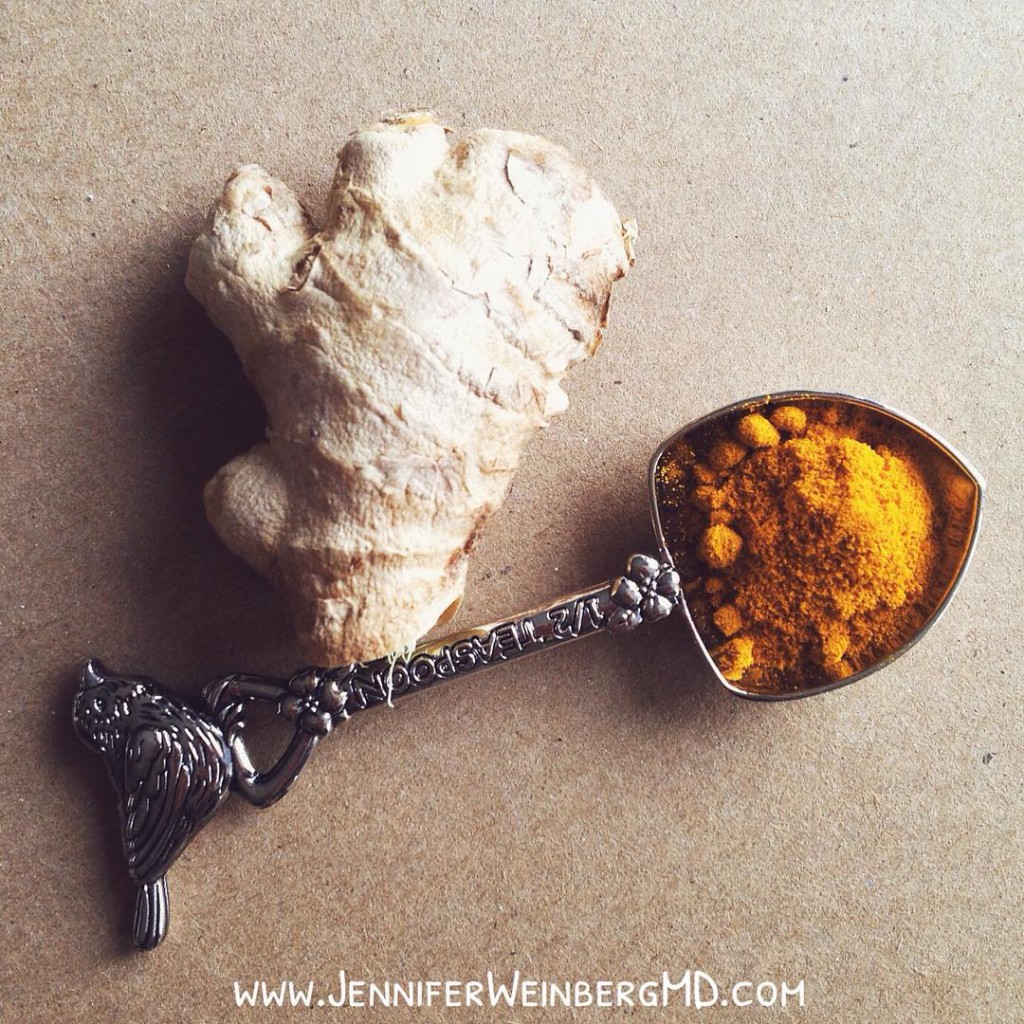
Simple Pure Whole Solutions
- Given its bright color and antioxidant properties, turmeric has been used by women in India to boost the glow factor and soothe facial skin. You can try sprinkling a bit of turmeric with your facial cream to add a natural glow.
- The vibrant color of turmeric also helps make it a beautiful natural dye. Try coloring your homemade gluten-free play dough or Easter eggs with turmeric for a bright orange color (beware of potential for staining!) or use 3 Tablespoons of turmeric in a pot of boiling water to naturally dye fabric.
Stay tuned next week for some soothing, healing recipes utilizing these savory spices to support your immune system and boost vitality!
Have you incorporated these spices into your diet? What is your favorite way to enjoy them?
 If you enjoy this Simple | Pure | WholeTM recipe and want more allergy-friendly healthy options, check out my Glorious Greens for Great Health virtual workshop and cookbook, The Fall Action Plan Cookbook and these free Simple | Pure | WholeTM recipes! If you have not already joined, I would love to have you as part of my free Insider’s Community where you will receive wellness resources, news and opportunities along with a special free gift! Get your FREE Chapters from The Whole Cure and purchase your copy of the paperback or Kindle edition today on Amazon!
If you enjoy this Simple | Pure | WholeTM recipe and want more allergy-friendly healthy options, check out my Glorious Greens for Great Health virtual workshop and cookbook, The Fall Action Plan Cookbook and these free Simple | Pure | WholeTM recipes! If you have not already joined, I would love to have you as part of my free Insider’s Community where you will receive wellness resources, news and opportunities along with a special free gift! Get your FREE Chapters from The Whole Cure and purchase your copy of the paperback or Kindle edition today on Amazon!
NOTE: this post contains affiliate links for products that I use myself and frequently recommend to my clients. These products and the information provided should not be considered medical advice. AFFILIATE DISCLOSURE: Amazon offers a small commission on products sold through their affiliate links. Prices are exactly the same for you if your purchase through an affiliate link or a non-affiliate link. Thank you!
This post was shared with: Healthy, Happy, Green & Natur
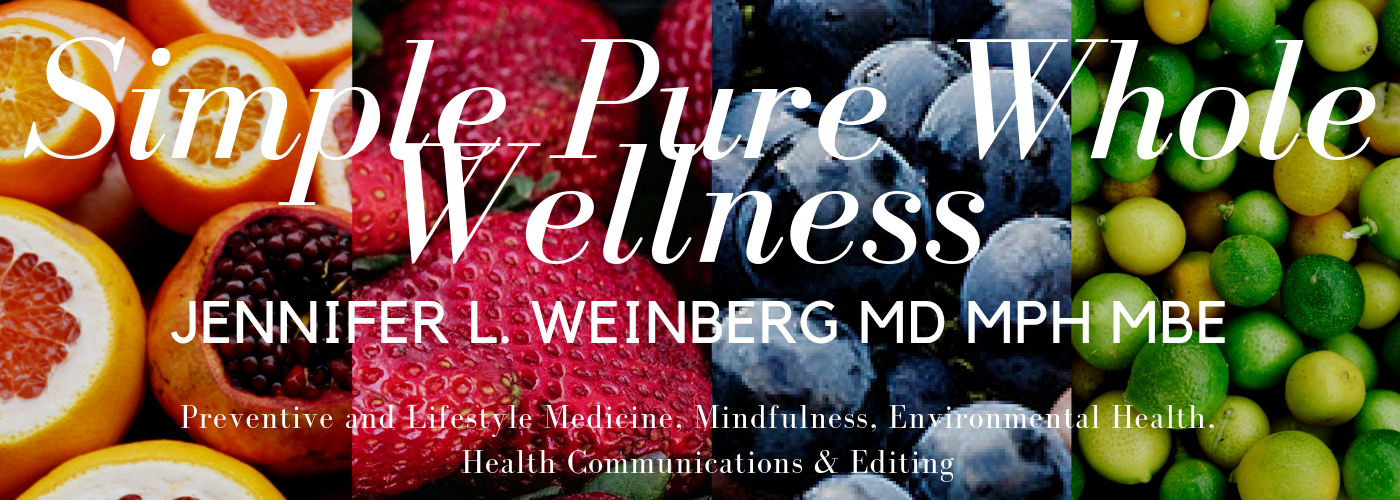

Comments
Deborah Davis
Cinnamon, ginger, turmeric are the staples of my diet. I use them every day. I have not been using cardamom yet but I am planning to try it soon. I am so glad you shared these healthy spices with us at the Plant-Based Potluck Party. I’m pinning and sharing!
Dr. Jennifer L. Weinberg, MD, MPH, MBE
I am glad you enjoy them too Deborah! Thank you for sharing and hosting. Hope you have a wonderful week
Raia
All my favorites! I love how many natural healers there are and how many delicious ways we can get them into our bodies. Thank you so much for sharing this at Savoring Saturdays, Jennifer!
Thank you so much for sharing this at Savoring Saturdays, Jennifer!
Dr. Jennifer L. Weinberg, MD, MPH, MBE
Thank you Raia! I am glad you enjoy these spices as much as I do! Hope you have a wonderful week
Deborah Davis
These are my favorites. Thank you for sharing these healthy and delicious savory spices for optimal health and gluten-free, vegan and allergy-friendly recipes to savor them at the Healthy Happy Green Natural Party! I’m Pinning and sharing this!
LifeDietHealth
A great article I don’t suppose you know if cassia bark has the same benefits as cinnamon? It’s something I’ve just come across at a far cheaper price (about a 20th of the price) but as it’s not exactly the same I wondered what the similarities are? Thanks for Sharing at the Plant Based Potluck
I don’t suppose you know if cassia bark has the same benefits as cinnamon? It’s something I’ve just come across at a far cheaper price (about a 20th of the price) but as it’s not exactly the same I wondered what the similarities are? Thanks for Sharing at the Plant Based Potluck 
Dr. Jennifer L. Weinberg, MD, MPH, MBE
Thank you! From my research, I believe Cassia bark is where Cassia cinnamon is derived from which is the vast majority of the cinnamon we find in stores. The other type is Ceylon cinnamon. They are two different species of evergreen tree belonging to the genus Cinnamomum. Ceylon is the sweetest and mildest tasting with less coumarin than the other varieties. But they have many of the same health benefits.
jen
my absolute must go to spice is turmeric. i have ibd so i take it daily for inflammation. really interesting to know about cinamon; i am going to add it to my baked bananas and apples.
really informative post- hoping over from healthy living link up
Dr. Jennifer L. Weinberg, MD, MPH, MBE
Thank you for stopping by Jen! Turmeric is fantastic, and I am glad to hear it helps your inflammation. Cinnamon baked apples and bananas sound fantastic
Linda at Mixed Kreations
Thanks for this info. I add cinnamon in my smoothies and my oatmeal, and I take turmeric daily. I need to check out some of these other ones as well, thanks so much for sharing this useful information! Pinning!
Dr. Jennifer L. Weinberg, MD, MPH, MBE
Thank you Linda! Cinnamon in smoothies is one of my favorites too
Tianna
lovely picks! cinnamon, ginger and turmeric are some of my favorites! I also really love garlic (not technically a spice. I know), basil, mint, and rosemary
Dr. Jennifer L. Weinberg, MD, MPH, MBE
You have great taste in spices Tianna Thanks for stopping by!
Thanks for stopping by!
Chrystal
I love all of them. Thank you for explaining some of the health benefits!
Chrystal
Dr. Jennifer L. Weinberg, MD, MPH, MBE
Thank you Chrystal!
Rebecca Strength and Sunshine
All of my favorites!
Dr. Jennifer L. Weinberg, MD, MPH, MBE
Thanks Rebecca! I love these spices too!
Cailee
Wow! This is awesome! It’s amazing how spices have such benefits! My mum always told me how good it was for you. Thanks so much for the info!
Dr. Jennifer L. Weinberg, MD, MPH, MBE
Thank you Cailee! I enjoy these spices too and also appreciate the medicinal benefits